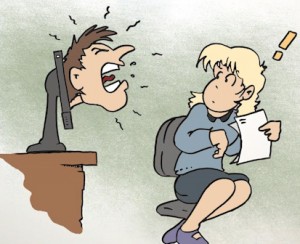When you or a team member face a challenging customer complaint, often times, that complaint is more about validating the customer’s emotions than the actual problem. Angry customers need you to acknowledge that they’ve been wronged, and they want your attention right away.
Use our ASAP technique to effectively diffuse and handle upset, angry, irate customers:
Apologize and acknowledge
Sympathize and empathize
Accept responsibility
Prepare to help.
Feelings are key. We need to apologize sincerely, immediately, and follow up with action. Insincere responses, such as “Oh, I’m sorry,” won’t help and could even cause additional damage. Imagine you were the customer with that experience, and ask yourself how you would want it handled.
Let’s break it down step by step.
Suppose a customer calls in screaming, “I want my money back and I want it now. I’m sick and tired of all your mistakes!”
Your first response should be “A” – apologize and acknowledge – start by saying, “I apologize for your inconvenience. No wonder you’re upset.”
Then, follow this with an “S” – sympathy and empathy – response. Pretend it’s you having the problem. How would you want to be dealt with? This part is crucial: “I don’t blame you for being upset. It’s got to be very frustrating.”
Now that the caller is a little mollified, you can “A” — accept the responsibility – and reintroduce yourself. The reintroduction is very important: “Let’s see how I can help. My name is Paige, and I am speaking with?”
And finally, “P” – prepare to help – be sure to demonstrate a sincere willingness to assist them. Remember to use the customer’s name, this will further help diffuse their anger: “Thanks, Mr. Perkins. Again, my name is Paige, and I’m here to help. Now, please, tell me, what happened?”
Keep in mind that when you’re dealing with an angry customer, you’ll likely spend 80% of your time massaging the client’s feelings and only about 20% actually solving the actual problem. Feelings are key. Most customers want sympathy or empathy almost as much as they want the problem fixed. It’s frustrating to tell your complaint to someone who obviously doesn’t care.
When you use the ASAP technique as your guidelines, you’ll help diffuse an emotional situation and work to retain that customer.
##########
© ServiceSkills.com We encourage you to distribute this message to colleagues. When you’re ready to empower your staff with proven customer service and team building skills, please let us know.
